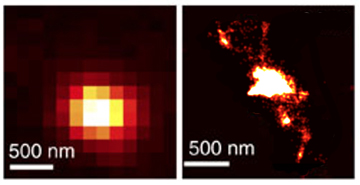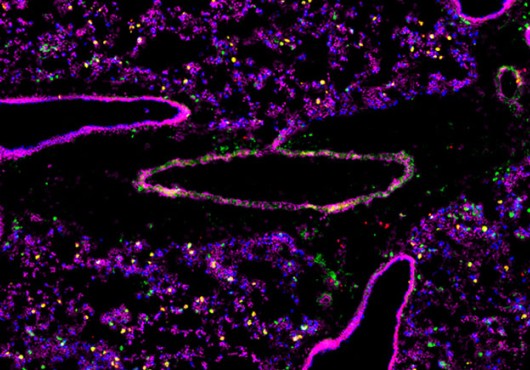
Advances in Oligopaint imaging can distinguish maternal (green) from paternal (magenta) chromosomes in a fruit fly. By contrast, conventional Oligopaint probes (blue) bind to both chromosomes. Image: Eric Joyce, Wu lab

HMS professor of genetics Ting Wu explains why she’s excited about new chromosomal imaging techniques. Video: Stephanie Dutchen

Brian Beliveau describes the advances Oligopaints have made possible. Video: Stephanie Dutchen






